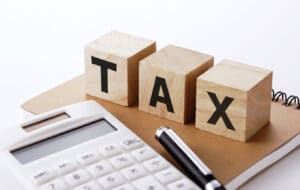How Much Tax Does a Self-Employed Person Pay?
It is important to know how much tax does a self-employed person pay if you work as an independent contractor in Nevada. 30% of Americans own their own business or are self-employed in some way. Therefore, they have to pay their own taxes for that money earned.
If the right amount is not deducted and sent in, it can result in back taxes owed at a later date. Additional fees may also be assessed for late filing or payment. Expenses get higher every year as the cost of good and services go up, so it is important to pay the correct amount to save for the future. If the right amount has not been deducted for years, then the problem will only get worse. It is good for all independent contractors and business owners to know how much tax does a self-employed person pay each year in taxes.
What Is Self-Employment Tax?
A self-employment is a tax paid by individuals to work for themselves that consists of Social Security and Medicare. The self-employment tax is not the same as income tax. The taxed amount is the net earnings, or profit, that the filer has made over the year minus business expenses.
If a worker works for an employer, they calculate those taxes for the wage earner and take it directly out of their paycheck. The employer typically pays for half of the taxes, 7.65% and the employee pays the other 7.65%. If the worker works for themselves, then they have to fill out SE tax forms such as a 1040 or 1040-SR to figure out the amount to take out and are responsible for the entire amount themselves.
It is important to know what taxes that a self-employed individual or 1099 employees has to take out and when, or they will be late paying their taxes. If the worker makes over a certain amount during the tax year, they have to deduct from their earnings a certain amount that is paid towards social security and part that goes to Medicare. This does not include health insurance, which is usually also paid out of pocket by the independent contractor.
IRS tax problems can lead to much larger problems down the line if they go ignored. If the wrong amount is not paid for the current or previous years, it can lead to back taxes. When back taxes are owed, the IRS will generally try to enforce collection of the amount due. Such actions can include garnishments that could end up costing the taxpayer more than just what is owed. Trying to recover from these unnecessary costs may affect the future of the filer. If the IRS has sent any notices of these enforcement methods, they should not be ignored but handled in a timely manner.
What Is the Self-Employment Tax Rate?
To know how much to set aside for taxes, it is important to know the self-employment tax rate, which is 15.3%. This rate is broken up into two parts. 12.4% goes for social security to help pay for old age, disability insurance and for any survivors. 2.9% is paid towards Medicare for hospital insurance. In 2022 the first $147,000 of combined wages, tips and net earnings are subject to any combination of these taxes for social security. All combined wages, tips and net earnings in the current year are subject to any combination of Medicare part of the self-employment tax.
Once the filer has determined what amount of their net earnings is subject to taxes, then they can apply the 15.3%. If they need help figuring out their net earnings, he or she can use the IRS Schedule C to calculate this amount, then apply the tax rate. Because self-employed workers have to pay for their own health insurance, there are places on the tax forms to deduct for the amount of that insurance.
It is good to know that there are other deductions that a self-employed individual can claim on their taxes to reduce the amount owed. Some of these include:
- You can deduct half of the self-employment tax on income taxes
- Business deductions that qualify
- Home office deductions
- Gas for travel and other expenses.
How Much Should an Independent Contractor Set Aside for Taxes?
The worker should use the above-mentioned tax rate to set aside money each quarter to pay their taxes instead of yearly if he or she thinks it is necessary. Normal workers are only required to file once a year to receiver either a refund or pay an amount owed.
Self-employed workers may have to file their taxes on a quarterly basis instead of once a year. The filer should do this if they believe that they will owe over $1,000 in federal income tax and if the withholding and refundable credits will not cover a certain percentage of tax liability for the current year or the prior one, depending on which one is smaller. It’s important to for the filer to know if this must be done, so the amount can be deducted and paid. If they fail to file their taxes on time, they might have a late fee that must be paid on top of the taxes owed. If this amount continues to go unpaid, the IRS might begin to enforce collections, and then it might be best to get a lawyer is experienced in tax debt help for the self-employed.
To be able to figure out how much should be set aside, the payer can use an estimation of what the tax payment should be for their self-employment tax or some of the IRS Schedules. It can not only cost more money later on, but also the time of having to fix any errors that were made, especially if the filer is having to go back over records from previous years. If this does happen, then an attorney can help to advise on which records will be important to present and might be able to help find deductions as well that can help to decrease the amount owed. Being self-employed does allow for a lot of deductions from taxes as long as the filer is aware of them and files all the correct forms along with their deductions.
Who Must Pay Self-Employment Tax in Nevada?
An individual who workers for themselves who makes over $400 a year must pay the self-employment tax in Nevada and across the country. However, this does not include income the individual makes working for a church. This type of income becomes taxable after the individual has made over $108.28 for that year.
A worker must also file to pay all of their taxes if they receive a 1099. If the individual has made over this amount in either type of earning, then they would need to file the correct self-employment forms along with the correct amount that is needed for the income made. Although taking into account that once the individual has made over a certain dollar amount, then not all taxes must be deducted.
As filing self-employment tax forms can be stressful, it is always good to get legal advice to know which income is taxable at what amounts so the correct tax amount is deducted. There is no age limit on having to pay self-employment tax, either, even if the individual is receiving social security and medicare. If they still have an income that is coming in, then they will need to figure the taxes they will have to pay on their taxable income.
Caregivers also have to follow their own set of rules for filing taxes. This is because they are usually employed by the individual that they are caring for, or the family. This practice is done so that the person receiving the services can tell the caregiver what they need and what to do.
Some people who might have to fill out the Self-employment tax documents include:
- Independent contractors
- Freelancers in all industries
- Small business owners
- Employees who receive a 1099 form from their employer instead of a W2
If a worker is not sure that their job falls into one of these categories, then they might consult with an attorney. An attorney can help the taxpayer avoid common mistakes self-employed taxpayers make, especially if it is the first year they are filing these types of forms.
It is important for the taxpayer to know that to file their taxes, they must have a valid social security number or an Individual Taxpayer identification Number (ITIN). If the taxpayer is not eligible to apply for a social security number, then they must file with the IRS to get assigned their ITIN. The tax forms cannot be filed unless the filer has one of these assigned identifiers, so obtaining the correct identifier early, and knowing how much tax does a self-employed person pay, will help avoid the tax forms being filed late.
For More Information
To learn more about self-employment and Nevada tax law, check out these resources:
Common Mistakes Self-Employed Taxpayers Make
Who Should Pay Quarterly Estimated Taxes?
Is it ever acceptable to not pay my taxes on time?
When small business owners fail to pay their taxes




